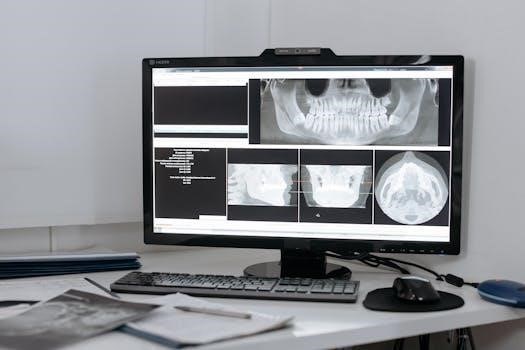Private Pilot Oral Exam⁚ Overview
The private pilot oral exam is a crucial part of the checkride, typically lasting about two hours. It assesses a pilot’s knowledge across diverse subjects. This examination, alongside the flight exam, determines pilot certification. Success depends on thorough preparation, using comprehensive guides.
Exam Structure and Duration
The private pilot oral exam is structured as a question-and-answer session, conducted by an FAA examiner or designated pilot examiner (DPE). The examiner will ask questions covering a wide range of aviation topics, including regulations, aerodynamics, aircraft systems, weather, and flight planning. The duration of the oral exam typically ranges from one and a half to two hours, though it can vary depending on the applicant’s preparation level and the examiner’s approach. The examiner will assess the applicant’s understanding of the material, ability to apply the knowledge, and decision-making skills. The oral exam is a critical component of the practical test, where a pilot must demonstrate competence in the knowledge areas required for certification. It is important to note that the oral exam is not just a test of memorization; it is an evaluation of a pilot’s understanding of aviation principles and ability to apply them in real-world scenarios. A well-prepared applicant should be ready to engage in a thorough discussion with the examiner.

Key Resources for Preparation
Effective preparation for the private pilot oral exam requires utilizing several key resources. The “Private Pilot Oral Exam Guide” is an essential study tool, often structured in a question-and-answer format that mirrors the actual exam. These guides are frequently updated to align with the latest Airman Certification Standards (ACS) and cover crucial topics like weather services, regulations, and airspace. The FAA’s Pilot’s Handbook of Aeronautical Knowledge (PHAK) and the Airplane Flying Handbook (AFH) are also foundational texts. Additionally, the FAR/AIM (Federal Aviation Regulations/Aeronautical Information Manual) is vital for understanding rules and procedures. Practice exams and study groups can provide valuable review and discussion opportunities. Finally, the Pilot Operating Handbook (POH) for the specific aircraft used in the checkride should be studied thoroughly. Using a combination of these resources will help to ensure that the applicant is fully prepared for all aspects of the oral exam.

Core Knowledge Areas
The private pilot oral exam covers essential areas including pilot qualifications, regulations, weather, and aircraft systems. Understanding these subjects is crucial for safe and competent flight operations. Thorough preparation is key.
Pilot Qualifications and Requirements
To qualify for a private pilot certificate, applicants must meet specific criteria as outlined in the Federal Aviation Regulations (FARs). Firstly, individuals must be at least 17 years of age. They also need to demonstrate proficiency in English, both spoken and written. Furthermore, a valid medical certificate, typically a third-class medical, or BasicMed compliance is necessary. Applicants must also pass both a knowledge test and a practical exam. The practical test includes an oral exam and a flight evaluation. The oral exam assesses the applicant’s understanding of aviation concepts. This includes regulations, meteorology, and aircraft systems. The flight portion evaluates their ability to safely operate an aircraft. Meeting these qualifications ensures pilots are prepared for their responsibilities.
Regulations and Airspace
A thorough understanding of aviation regulations and airspace is paramount for private pilots. The Federal Aviation Regulations (FARs) dictate the rules of flight, and pilots must be well-versed in these guidelines. This includes regulations regarding pilot privileges and limitations, aircraft airworthiness, and operating procedures. Pilots must also be able to interpret and apply these regulations to various flight scenarios. Understanding airspace classifications, such as Class A, B, C, D, E, and G, is essential for safe operations. Knowledge of each airspace’s requirements, including communication protocols, equipment requirements, and weather minimums is also critical. Pilots must demonstrate the ability to navigate and operate within these designated airspaces. This ensures compliance and promotes safety in the national airspace system.
Weather Services and Interpretation
Proficient weather analysis is crucial for every pilot. Private pilots must be able to access and interpret various weather products. This includes understanding METARs, TAFs, and surface analysis charts, which provide current conditions and forecasts. They must also be able to analyze and identify potential hazards, like thunderstorms, icing, and wind shear. Furthermore, pilots should be familiar with sources like Aviation Weather Center (AWC) and Flight Service Stations (FSS) for pre-flight briefings. They should know how to interpret weather radar images and understand the implications of different weather patterns on flight operations. Being able to make informed go/no-go decisions based on weather is a key skill that demonstrates sound judgment. A pilot’s understanding of weather directly impacts flight safety and efficiency.
Aircraft Systems and Aerodynamics

A comprehensive understanding of aircraft systems and aerodynamics is vital for private pilots. The oral exam will assess knowledge of the powerplant, electrical system, flight controls, and fuel system. Pilots must understand how these systems function and how they impact flight. Furthermore, knowledge of basic aerodynamic principles is essential. This includes understanding lift, drag, thrust, and weight, as well as how they interact during flight. Pilots should know about factors influencing stall speed and how to avoid stalls. They must also understand the effects of different flap settings and other configuration changes. This knowledge ensures pilots can operate aircraft safely and effectively, maintaining control and handling various flight conditions. A solid grasp of these principles is critical for safe flight operations.

Practical Exam Focus
The practical exam focuses on flight planning, airport operations, and common oral questions. It also includes a checkride preparation checklist. This ensures complete readiness for the practical flight test, covering all essential topics.
Flight Planning and Performance
This section of the oral exam delves into the intricacies of pre-flight planning, requiring a detailed understanding of how to prepare for a safe and efficient flight. Examiners will probe your knowledge of weather analysis, including interpreting forecasts and identifying potential hazards. You’ll need to demonstrate proficiency in using resources to determine performance data, such as takeoff and landing distances, climb rates, and fuel consumption. Weight and balance calculations are crucial, ensuring the aircraft is operated within its certified limits. Expect questions on cross-country planning, including navigation techniques and the selection of appropriate altitudes. You should be able to explain how you consider factors like wind, terrain, and airspace restrictions. Understanding how to utilize charts and navigation tools is a must. Finally, be prepared to discuss contingencies, such as diversions and emergency procedures related to flight performance.
Airport Operations
This portion of the oral exam focuses on your understanding of airport procedures and operations. You should be familiar with airport markings, signs, and lighting systems, demonstrating your ability to navigate an airport environment safely. Expect questions about runway configurations, taxi procedures, and the use of radio communication with air traffic control. Examiners will assess your knowledge of various airport types, including towered and non-towered fields, and the specific procedures associated with each. Understanding the traffic patterns, both standard and non-standard, is essential. You should be able to explain how to handle situations such as intersecting runways, low visibility conditions, and potential runway incursions. Additionally, you must be prepared to discuss the rules and regulations governing airport operations, including noise abatement procedures and security protocols. Be ready to describe your responsibilities when operating at different types of airports and in different conditions.
Common Oral Exam Questions
During the oral exam, you’ll likely face questions covering various aspects of aviation knowledge. Expect questions on pilot qualifications, such as the eligibility requirements for a private pilot certificate, and the privileges and limitations associated with it. You might be asked about the documents a pilot must carry while flying, including your medical certificate and pilot certificate. Weather-related questions are frequent, including interpreting aviation weather reports and understanding VFR weather minimums. Aircraft systems and aerodynamics will also be covered, assessing your grasp of basic principles. You must be prepared to discuss aircraft weight and balance, and how to determine the center of gravity. Other questions often include flight planning, regulations, and airspace classifications. Be ready to describe your understanding of different types of airspace and the associated rules. Expect questions about the aircraft’s operating limitations and procedures. Finally, the examiner may present real-world scenarios to assess your decision-making abilities.
Checkride Preparation Checklist
Preparing for your checkride requires meticulous attention to detail. Begin by ensuring you have all necessary documents, including your medical certificate, pilot certificate, and government-issued photo ID. Confirm that your aircraft’s paperwork is in order, with a current registration and airworthiness certificate. Review your logbook to ensure your flight hours and endorsements meet the requirements. Familiarize yourself thoroughly with the aircraft’s Pilot Operating Handbook (POH). Gather all your charts, flight planning materials, and a flight computer. Consider bringing a pen, pencil, and scratch paper for notes. Check that your personal equipment, such as a headset and kneeboard, are in good working order. Utilize a practical test checklist to confirm that you have addressed all the required tasks. Review the Airman Certification Standards (ACS). Practicing with a study group can also help identify any weak areas. Finally, ensure you have an understanding of the oral exam format and typical questions.
